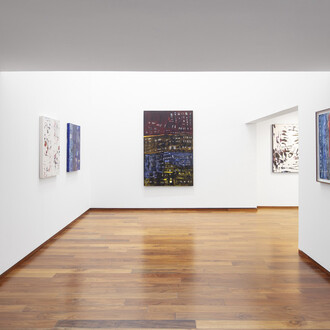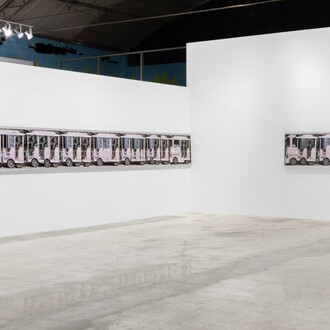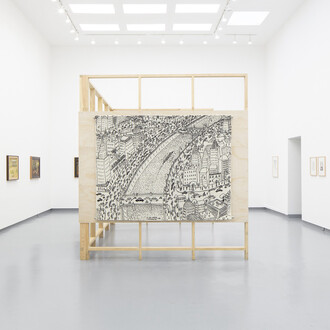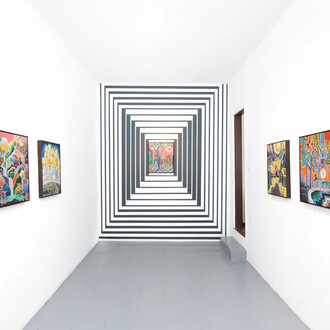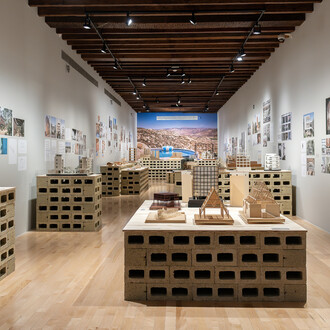Trajectories inserts itself in the context of the celebrations for the artist's 90th birthday, as a key figure in the development of contemporary art in Mexico. This exhibition revolves around three creative moments that marked changes of course within his artistic output: the scrap murals, The Aesthetic Machine, and his most recent work.
In his early work, Felguérez frequently recovered scrap and waste materials to use in the construction of murals, such as Song to the Ocean (1963) and Iron Mural (1961). These reveal his expertise in working with large format pieces, through a multidisciplinary and collaborative logic, which resulted in a radical renewal in Mexican culture.
His interest in experimentation is revealed in The Aesthetic Machine, a project he carried out in the mid-1970s. By using a computer in the design of his work, Felguérez investigates the possibilities that exist in the relationship between science and art by ascribing a creative quality to the machine. This stage offers glimpses of the conjunction—always present in his work—between the pictorial and the sculptural, since it proposes different visual solutions to a specific form. In turn, the models he developed enter into dialogue with the geometric figures and indicate a particular tendency in the use of space and formal construction.
Finally, the vitality and relevance that Felguérez retains in artistic circles is made clear in his ambitious recent visual production, which retains his taste for large format work and the use of different materials for abstract compositions.









